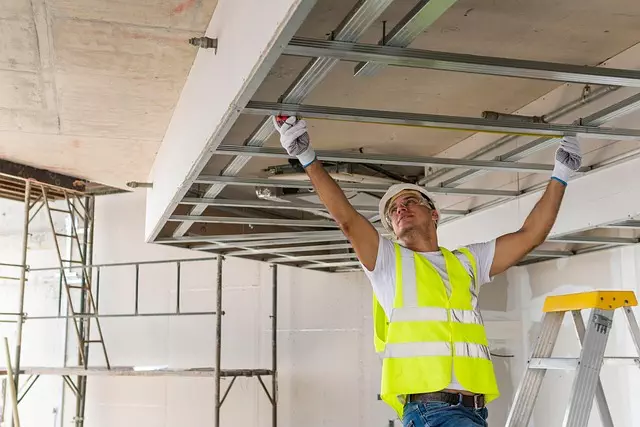Passive subwoofers, popular for DIY and professional car audio installations in Toledo, offer efficient low-frequency reproduction. Installation choices between DIY and professionals hinge on expertise and desired outcomes. Strategic planning involves selecting suitable subwoofer size, mounting securely, aligning with the sound system, and proper wiring. Optimal placement is key: trunk or dedicated enclosures for vehicles, minimal vibration areas for DIY, and matched amplification for enhanced performance.
“Dive into the world of enhanced audio with our comprehensive guide on passive subwoofer installation. Whether you’re a DIY enthusiast or considering professional help for your Toledo-based vehicle, this article is your navigation tool. We explore the ins and outs of setting up a car subwoofer system, from understanding passive systems to choosing the ideal location. Learn about the pros and cons of DIY versus professional installation, ensuring optimal sound quality tailored to your preferences.”
- Understanding Passive Subwoofer Systems: A Comprehensive Overview
- DIY vs Professional Installation: Weighing Your Options
- The Process of Passive Subwoofer Installation in Vehicles
- Choosing the Right Location and Amplification for Optimal Sound Quality
Understanding Passive Subwoofer Systems: A Comprehensive Overview
Passive subwoofers are a popular choice for both car audio systems and home theater setups, offering a unique and efficient approach to low-frequency reproduction. Unlike active subwoofers that require an amplifier, passive subs rely on the existing amplification system to drive them, making DIY installation and customization more accessible. In the context of car subwoofer installation Toledo, this means enthusiasts can enhance their vehicle’s audio without the need for complex wiring or specialized equipment.
For those considering a diy subwoofer installation, understanding the components is key. A passive subwoofer typically consists of a driver (the woofer), a passive radiator (for enhanced efficiency and reduced distortion), and a sealed or ported enclosure. Professional subwoofer installation ensures optimal performance by carefully selecting these parts based on the desired output and vehicle characteristics. Proper enclosure design plays a crucial role in tuning the sub to deliver the best sound quality, providing a deep punch without compromising clarity.
DIY vs Professional Installation: Weighing Your Options
When considering passive subwoofer installation in your vehicle, one of the primary decisions you’ll face is whether to go DIY or hire a professional. DIY subwoofer installation can be an appealing option for those who enjoy hands-on projects and want to save on costs. It offers flexibility in terms of placement and customization, allowing you to design your setup according to your car’s unique space and audio preferences. Many online resources and tutorials make the process seemingly accessible, especially for simple installations.
However, professional subwoofer installation has its advantages, particularly when it comes to quality and safety. Professionals have the expertise and experience to ensure proper placement, wiring, and tuning of the subwoofer system, optimizing sound performance while maintaining vehicle integrity. This is especially crucial in complex car models or for those seeking state-of-the-art audio setups. Professional installers can also provide valuable insights into amplifier selection, speaker placement, and noise reduction techniques, ensuring a seamless and immersive audio experience in your car subwoofer installation in Toledo.
The Process of Passive Subwoofer Installation in Vehicles
Passive subwoofer installation in vehicles is a process that requires careful planning and execution. It begins with selecting the right subwoofer size and power rating for your vehicle’s interior space and audio preferences. Once chosen, the subwoofer needs to be securely mounted, ensuring proper alignment with the car’s sound system. This often involves modifications to existing components, such as cutting out panels in the trunk or under the seats, to accommodate the subwoofer and its amplifier.
The DIY approach is popular among car enthusiasts who enjoy hands-on projects and want to save costs. However, professional installation offers advantages in terms of precision and safety. Professional installers have the expertise to navigate tight spaces, ensure optimal sound output, and guarantee a secure fit that prevents vibrations from causing damage to the vehicle’s interior or other components. Whether opting for DIY or professional installation, proper wiring, grounding, and safety measures are paramount to achieve the best results in car subwoofer installation Toledo has to offer.
Choosing the Right Location and Amplification for Optimal Sound Quality
When installing a passive subwoofer, whether in a vehicle or as a DIY project, selecting the ideal location is paramount for achieving superior sound quality. The subwoofer should be placed where it can resonate freely, away from rigid surfaces that might dampen its performance. In a car, the trunk or a dedicated enclosure offers the best space for optimal sound projection. For a diy installation, consider areas with minimal vibrations and ample room for movement, such as a basement or home theater setup.
Amplification plays a crucial role in unlocking the full potential of your subwoofer. A suitable amplifier ensures that the sub receives the necessary power to reproduce deep bass accurately. Professional subwoofer installations often utilize dedicated amplifiers designed specifically for subwoofers, offering precise control and enhanced sound quality. When choosing an amp, match its wattage output to the subwoofer’s specifications for best results in both performance and efficiency.


